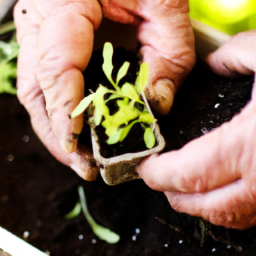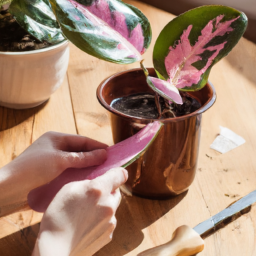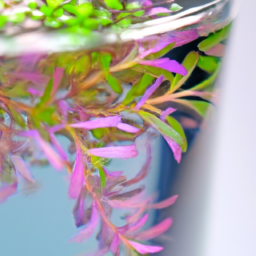
Have you ever wanted to try your hand at propagating plants in water? It’s a fun and rewarding way to grow your plant collection without spending a lot of money. In this blog post, we’ll discuss the best plants to propagate in water. Whether you’re a seasoned plant parent or just starting out, propagating in water is a great way to expand your green thumb skills. So grab a glass of water and let’s dive into the world of water propagation!
Benefits of Propagating Plants in Water
Easy and Cost-Effective
Propagating plants in water is a simple and cost-effective way to expand your plant collection. All you need is a glass of water and a healthy plant cutting to get started. There is no need to purchase expensive soil or pots, making it a budget-friendly option for any plant enthusiast. Additionally, water propagation is a great way to rescue a dying plant or propagate rare plants that are hard to find in stores.
Not only is water propagation easy on the wallet, but it is also a low-maintenance method of growing new plants. Once you have placed your plant cutting in water, all you need to do is change the water every few days to keep it fresh. This hands-off approach is perfect for busy individuals or those with a busy schedule who still want to enjoy the benefits of growing their own plants.
In addition to being easy and cost-effective, propagating plants in water can also be a fun and rewarding experience. Watching your plant cutting grow roots and eventually develop into a thriving plant can be incredibly satisfying. It is a great way to connect with nature and learn more about the growth process of plants.
Healthy Root Development
One of the main benefits of propagating plants in water is that it promotes healthy root development. When a plant cutting is placed in water, it allows the roots to grow freely and develop without any obstructions. This can result in stronger and healthier roots, which will support the plant as it grows and matures.
Water propagation also allows you to easily monitor the root development of your plant cutting. You can see the roots as they grow and adjust the water level as needed to promote healthy growth. This hands-on approach can help you learn more about the needs of your plants and how to best care for them in the future.
In addition to promoting healthy root development, propagating plants in water can also help prevent root rot. By regularly changing the water and ensuring that your plant cutting has good drainage, you can reduce the risk of root rot and other common plant diseases. This can help your plant cutting thrive and grow into a healthy, mature plant.
Versatility and Variety
Another benefit of propagating plants in water is the versatility and variety it offers. You can propagate a wide range of plants in water, from succulents and herbs to leafy greens and flowering plants. This allows you to experiment with different plant species and expand your collection without the need for additional soil or pots.
Water propagation also gives you the flexibility to easily move your plant cuttings around and rearrange them as needed. You can place them in different containers or locations to suit your space and design preferences. This versatility allows you to create unique and personalized plant displays that showcase your favorite plants in a creative way.
In addition to the variety of plants you can propagate in water, this method also allows you to create new plants from existing ones. By taking cuttings from your favorite plants and propagating them in water, you can create multiple copies to share with friends and family. This can be a fun and rewarding way to spread the joy of gardening and share your love of plants with others.
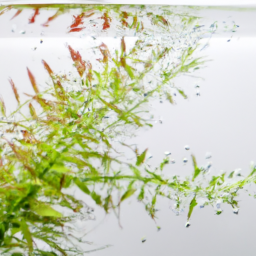
Top Plants for Water Propagation
Pothos
Pothos, also known as Devil’s Ivy, is a popular houseplant that is incredibly easy to propagate in water. To start, simply cut a healthy stem from the mother plant, making sure it has at least two nodes. Nodes are the points on the stem where leaves grow. Place the cutting in a glass of water, making sure the nodes are submerged. Change the water every few days to keep it fresh and prevent rot.
After a few weeks, you should start to see roots forming at the nodes. Once the roots are a few inches long, you can transplant the cutting into soil. Pothos is a hardy plant that can thrive in a variety of conditions, making it a great choice for beginner gardeners.
One thing to keep in mind when propagating pothos in water is that it can be prone to root rot if the water is not changed regularly. Make sure to check the water every few days and replace it if it starts to look cloudy or dirty. With a little care and attention, you can easily propagate pothos in water and enjoy watching it grow into a beautiful new plant.
Spider Plant
Spider plants are another popular choice for water propagation. These plants are known for their long, arching leaves and small white flowers. To propagate a spider plant in water, simply cut one of the plantlets that grow on the mother plant and place it in a glass of water. Make sure the roots are submerged and change the water every few days to prevent rot.
Spider plants are incredibly resilient and can thrive in a wide range of conditions. They prefer bright, indirect light but can also tolerate lower light levels. Once the roots are a few inches long, you can transplant the cutting into soil and watch it grow into a full-sized plant.
One thing to keep in mind when propagating spider plants in water is that they can be sensitive to fluoride and other chemicals found in tap water. To prevent damage to the plant, it’s best to use filtered or distilled water for propagation. With a little care and attention, you can easily propagate spider plants in water and enjoy watching them thrive in your home.
Lucky Bamboo
Lucky bamboo is a popular plant that is often grown in water. This plant is not actually a bamboo but is a type of Dracaena that resembles bamboo. Lucky bamboo is believed to bring good luck and prosperity, making it a popular choice for gifting.
To propagate lucky bamboo in water, simply cut a healthy stem from the mother plant and place it in a vase filled with water. Make sure the roots are submerged and change the water every few weeks to keep it fresh. Lucky bamboo can grow in just water, but you can also add pebbles or marbles to help support the stems.
Lucky bamboo is a low-maintenance plant that can thrive in a variety of conditions. It prefers bright, indirect light but can also tolerate lower light levels. With a little care and attention, you can easily propagate lucky bamboo in water and enjoy watching it grow into a beautiful new plant.
In conclusion, propagating plants in water is a fun and rewarding way to expand your indoor garden. With the right care and attention, you can easily propagate a variety of plants in water and watch them grow into beautiful new additions to your home. Whether you choose pothos, spider plants, lucky bamboo, or any other plant, water propagation is a great way to bring a little piece of nature indoors.
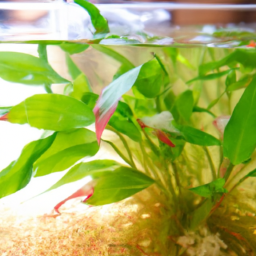
Tips for Successfully Propagating Plants in Water
Choosing the Right Plants
When it comes to propagating plants in water, not all plants are created equal. Some plants are much easier to propagate in water than others. The key is to choose plants that are known for their ability to root easily in water. Some popular choices include pothos, philodendron, spider plant, and coleus. These plants are known for their ability to quickly develop roots when placed in water, making them ideal candidates for water propagation.
Before you start propagating your plants in water, make sure to do some research on the specific plant you are working with. Some plants may not root well in water and may require a different propagation method. It’s also important to choose healthy, disease-free plant cuttings for propagation. Plants that are already struggling may not root well in water and may not survive the propagation process.
Preparing the Cuttings
Once you have chosen the right plants for water propagation, it’s time to prepare the cuttings. Start by taking a cutting from a healthy, mature plant. Use sharp, clean scissors or pruning shears to make a clean cut just below a leaf node. Remove any leaves from the bottom of the cutting, as these can rot in the water and cause problems for the developing roots.
After you have taken your cutting, place it in a clean glass or jar filled with room temperature water. Make sure that at least one or two leaf nodes are submerged in the water, as this is where the roots will develop. Change the water every few days to prevent the growth of algae and bacteria, which can hinder root development. Keep the cutting in a warm, bright location, but out of direct sunlight, as this can cause the water to heat up and promote the growth of harmful microorganisms.
Monitoring and Care
Once you have prepared your cuttings and placed them in water, it’s important to monitor their progress and provide proper care. Check the water level regularly and top it up as needed to ensure that the cuttings remain submerged. Keep an eye out for any signs of rot or mold, as these can indicate that the cutting is not rooting properly.
It’s also important to be patient when propagating plants in water. Root development can take anywhere from a few days to a few weeks, depending on the plant species and environmental conditions. Be sure to keep the water clean and fresh, as this will help prevent disease and promote healthy root growth.
By following these tips and choosing the right plants for water propagation, you can successfully propagate your favorite plants in water and enjoy watching them grow and thrive in their new environment. Happy propagating!
In Summary
Propagating plants in water is a simple and effective way to grow your indoor garden. Some plants thrive when propagated in water, making them perfect for beginners or those looking to expand their plant collection. One of the best plants to propagate in water is the pothos plant. Known for its hardy nature and beautiful trailing vines, pothos can easily be propagated by placing a cutting in a jar of water. Within a few weeks, roots will begin to grow, and you can then transfer the cutting to soil for continued growth.
Another great plant to propagate in water is the spider plant. With its striking green and white striped leaves, spider plants are not only visually appealing but also easy to care for. Propagating spider plants in water is a breeze – simply place a baby spider plant or cutting in a jar of water and watch as roots develop. Once the roots are established, you can transfer the plant to soil and enjoy watching it grow into a full-sized spider plant. Propagating plants in water is a fun and rewarding way to expand your plant collection, and with the right plants, you can easily create a lush indoor garden.
FAQ Compilation:
Q1: What are the best plants to propagate in water?
A1: Some of the best plants to propagate in water include pothos, spider plants, philodendron, lucky bamboo, and mint. These plants are known for their ability to root easily in water, making them great choices for water propagation.
Q2: How do I propagate plants in water?
A2: To propagate plants in water, simply cut a healthy stem or leaf from the parent plant and place it in a container filled with water. Make sure to change the water regularly to prevent the growth of bacteria. Roots should start to form within a few weeks, at which point you can transplant the cutting into soil.
Q3: How long does it take for plants to root in water?
A3: The time it takes for plants to root in water can vary depending on the type of plant and environmental conditions. In general, most plants will start to develop roots within 2-6 weeks. Some plants may root faster, while others may take longer, so be patient and monitor the progress regularly.
Q4: Can all plants be propagated in water?
A4: While many plants can be propagated in water, not all plants are suitable for this method. Some plants may not root well in water or may require a different propagation method. It’s best to research the specific plant you want to propagate to determine the best method for success.
Q5: Are there any tips for successful water propagation?
A5: To ensure successful water propagation, make sure to use clean, filtered water and place the cutting in a well-lit area without direct sunlight. Keep an eye on the water level and change it regularly to prevent stagnation. Additionally, be patient and avoid disturbing the cutting once roots start to form.
Dr. Olivia Green is a botanist with over two decades of experience in indoor plant cultivation. She holds a Ph.D. in Plant Biology and has dedicated her career to researching plant behavior in controlled environments. Dr. Green is passionate about helping plant enthusiasts master the art of indoor gardening through her extensive knowledge and practical insights.

